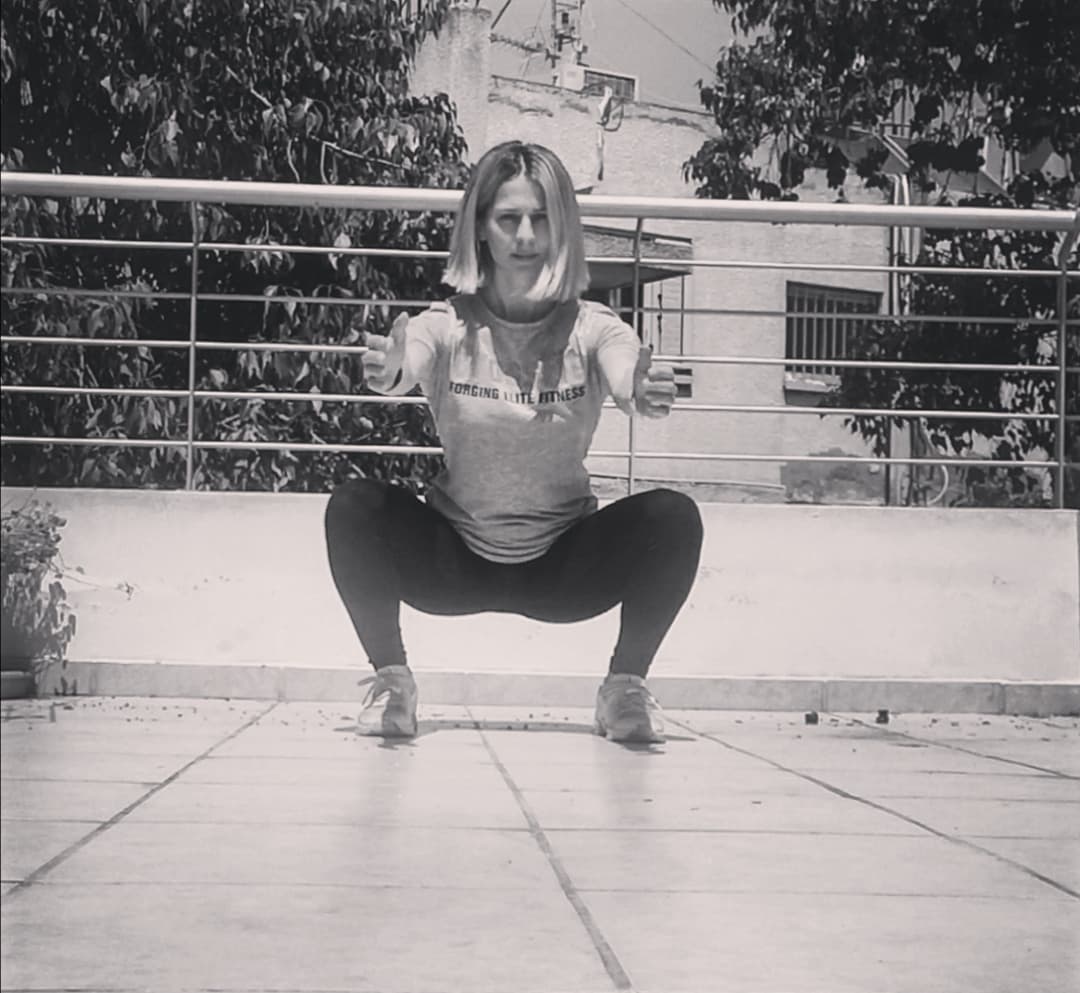Before you move on to a weighted squat or more simply before you grab a barbell, you must learn how to squat correctly, with your bodyweight only. If you want to train for as long as you exist, while remaining pain free, you should start looking at technique more seriously. Leave your ego behind and master the basics first.
First of all, everyone is different, thus I would not expect from everyone to squat in exactly the same way. It is important to squat in a way that feels comfortable. Anatomical differences and the way your body is structured, may affect how you squat. For example, a tall guy may need to adopt a wider stance in order to complete a full squat, compared to a shorter guy. Also, individual mobility limitations will impact the width of your stance.
However, you should aim at placing your feet at around shoulder width apart, which is a position in which other daily activities are performed. The simplest example? Walking. Also, you want to use a fairly straight forward foot position to start the bodyweight squat. Does anyone walk with their toes pointing outwards? Ok, maybe a lot! But, are we penguins, anyway? What I am trying to say is that If you cannot perform a bodyweight squat with your toes almost pointing straightforward maybe you have issues such as lacking some mobility at your hips, ankles or thoracic spine. However, if you squat with a barbell, turning your toes out is acceptable.
What is important to have in mind when you squat is the tripod foot. Many trainers incorrectly advice their clients to squat by placing all the weight on their heels. Do you ever walk on your heels? I bet you are not. For this reason, a stable squat should have a stable base of support which can be achieved through distributing the body’s weight over three points of contact of the foot, namely: the heel, the base of the first toe, and the base of the fifth toe. To increase stability and support we should maintain the arch of our feet and distribute our weight evenly.
How to execute a bodyweight squat:
- Stand in a shoulder/hip width stance. If it doesn’t feel comfortable you can go a bit wider.
- Make sure that your toes are pointing almost straightforward, or slightly out.
- Start the descent with a hip hinge. Send your hips back to engage the posterior chain (glutes and hamstrings). Do not start the squat by bending the knees, bent at the hips instead.
- Create external rotational torque at the hips. In simple words, squeeze your glutes, tighten your core, and drive your knees out, by pushing into the ground, as if you want to separate the ground. You want to engage the outside muscles of your hips while keeping your knees in line with your toes. This will help you create tension, as well as to maintain the arch of your foot.
- Keep the center of your gravity over the middle of your foot.
- Keep your neck and spine neutral and look slightly down, never look up to the ceiling.
- Descent to the level your mobility allows, in a controlled way. Not everyone can squat to the same depth, so feel free to stop the descent any time.
- To stand up, you need to push into the ground, maintaining your tripod foot and the arch. Make sure that you use the posterior chain by actively pushing the ground away.
- The chest arises at the same rate as the hips.
- Do not let your hips rise too soon, as this will drop your chest forward and will make you get off balance. Also, it can place more stress at your lower back.
- Make sure to keep your knees in line with your toes, as you ascent.
My advice:
Learn to squat properly with your body weight only before loading the movement. Learn to be efficient, by performing the squat with good form and technique. This will allow you to produce more power and increase strength, but most importantly to help you stay injury free and train for life!!
